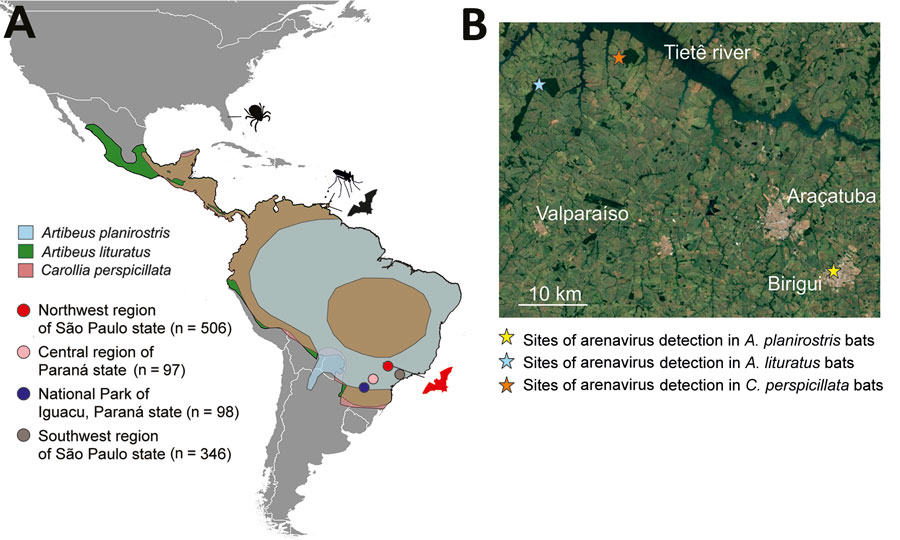Volume 28, Number 12—December 2022
Dispatch
Highly Diverse Arenaviruses in Neotropical Bats, Brazil
Figure 1

Figure 1. Bat mammarenavirus detection and host distribution in study of highly diverse arenaviruses in neotropical bats, Brazil. A) Geographic ranges of arenavirus-positive bat species indicated by blue (Artibeus planirostris), green (A. lituratus), and red (Carollia perspicillata) colors, according to the International Union for Conservation of Nature (https://www.iucnredlist.org). The brown areas in the map indicate the overlap of the distribution of A. lituratus and C. perspicillata. The absence of A. planirostris distribution in central Brazil likely represents lack of information regarding this species. Filled circles represent regions of sample collection: northwestern region of São Paulo state (red), central region of Paraná state (pink), National Park of Iguaçu, Paraná state (dark blue), and southwestern region of São Paulo state (gray). Number of bats obtained from each region is indicated. Red bat figure indicates where Tacaribe mammarenavirus and Tietê mammarenavirus were detected in the present study. Hosts from which Tacaribe virus was sequenced in other studies, including ticks (Florida, USA), mosquitoes, and bats (Port of Spain, Trinidad and Tobago) are indicated by black pictograms. Map prepared using QGIS desktop software version 3.24 (https://www.qgis.org). B) Areas of arenavirus detection in the northwestern region of São Paulo state, Brazil. Yellow star indicates the capture site of arenavirus-positive A. planirostris, blue star indicates the capture site of arenavirus-positive A. lituratus, and orange star marks the capture site of arenavirus-positive C. perspicillata bats. Tietê River and cities Araçatuba, Valparaíso, and Birigui are indicated. Dark green areas show forest fragments. Map obtained from Google Earth (https://earth.google.com)